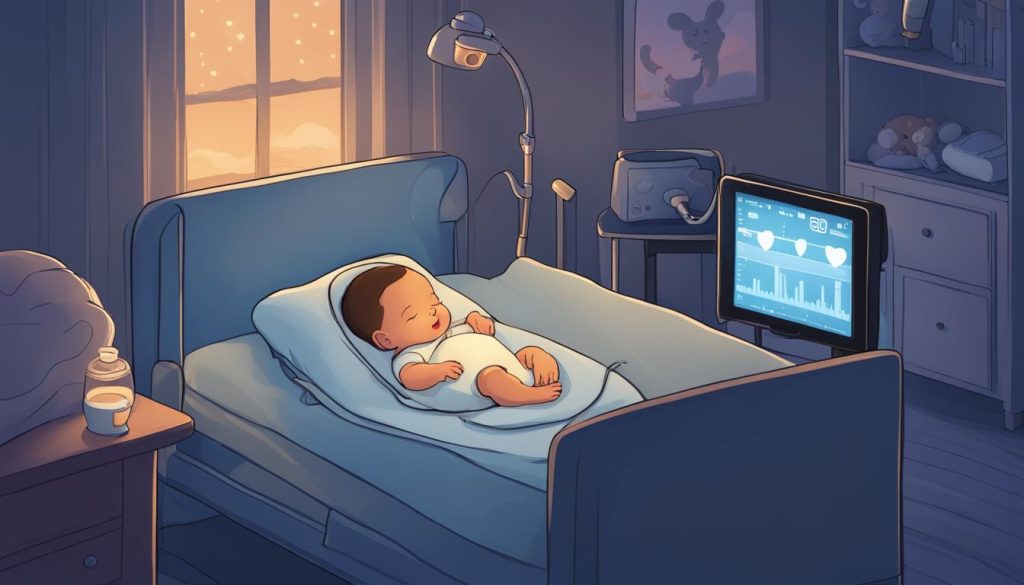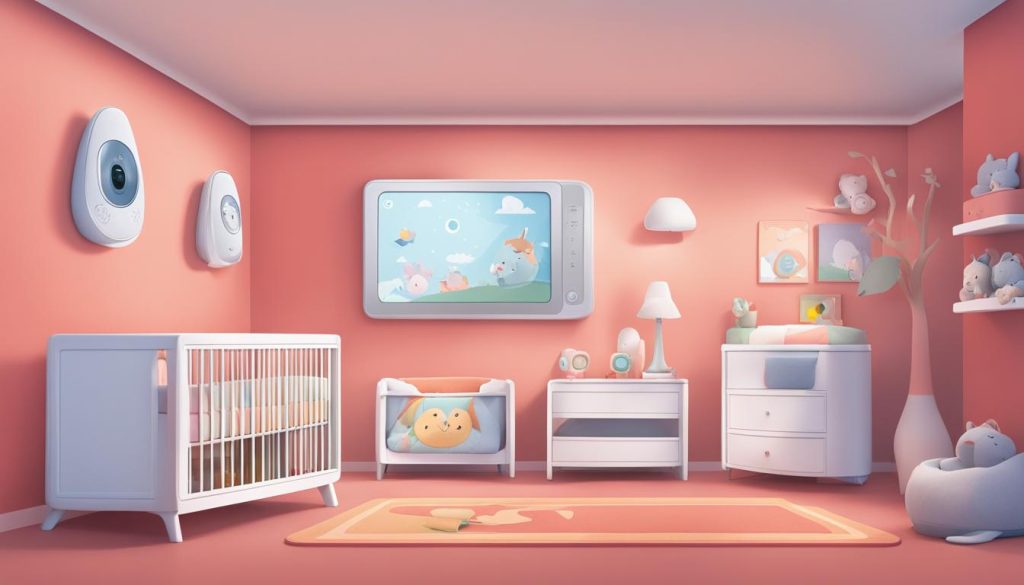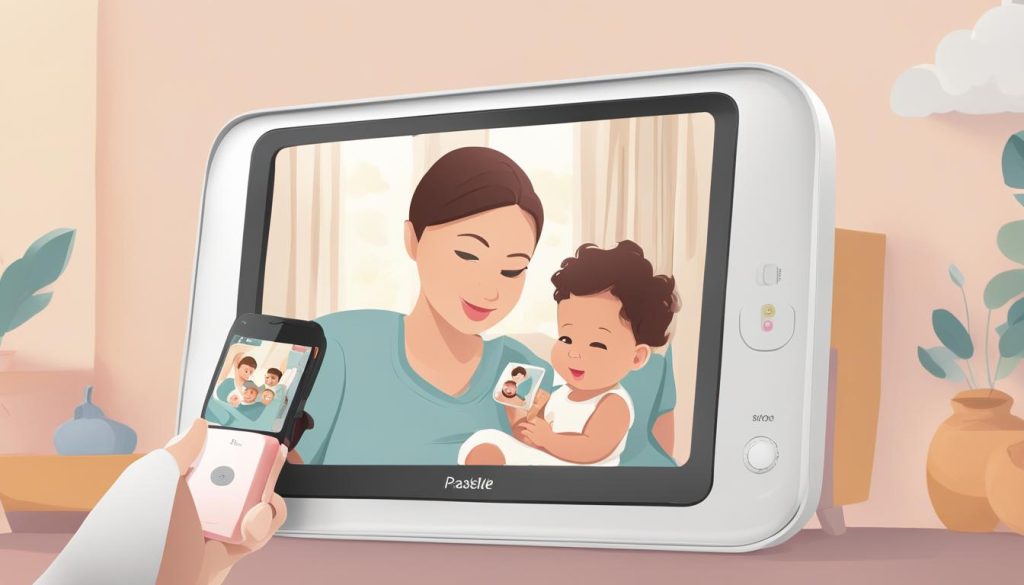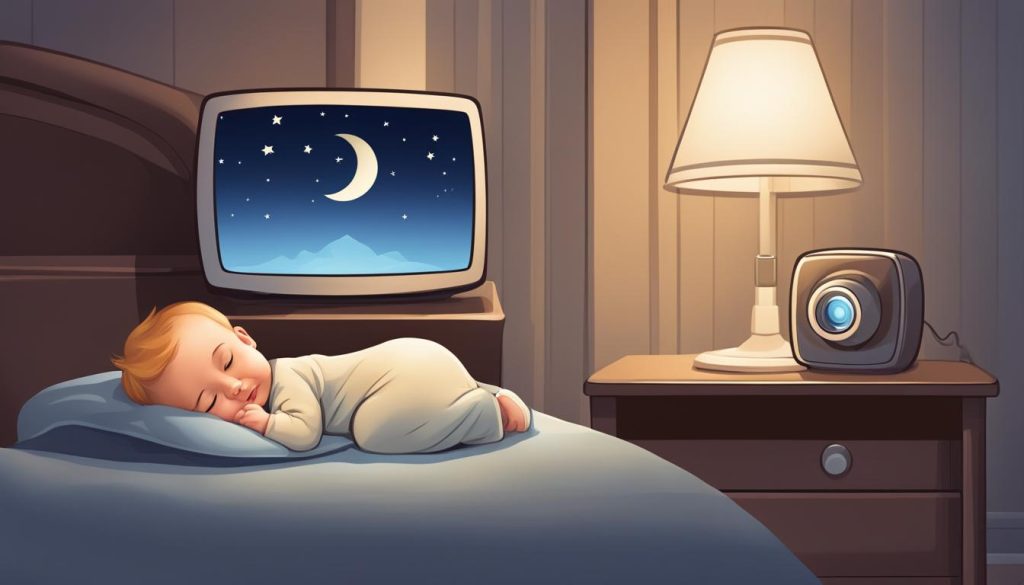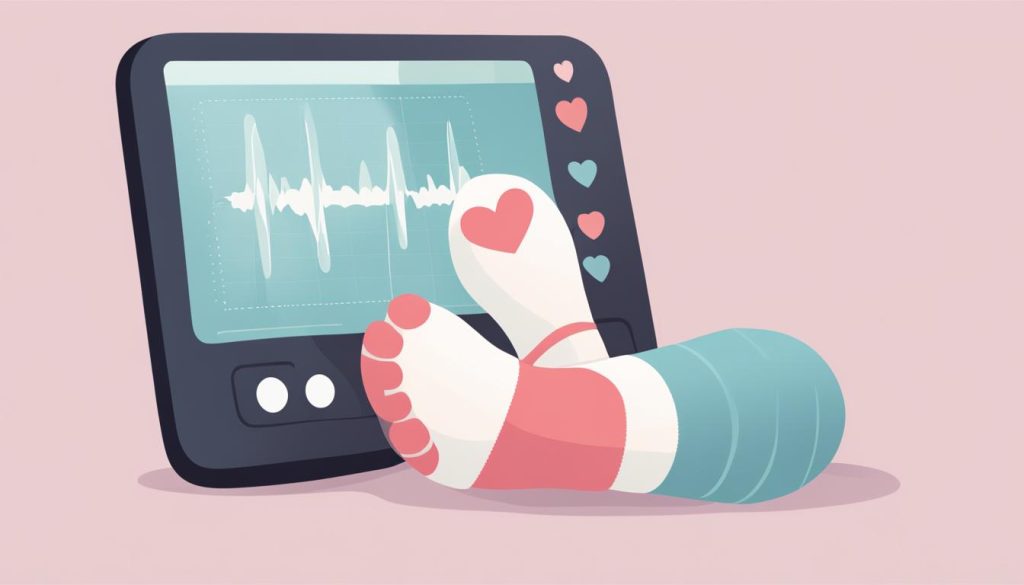Baby monitors have revolutionized parental monitoring by providing features like Wi-Fi connectivity, video streaming, and sleep tracking. One of the best options for parents looking to monitor their baby’s heart rate and sleep patterns is the Owlet Dream Sock. This smart baby monitor can measure blood oxygen levels, heart rate, and sleep cycles, and send alerts to your smartphone if anything seems unusual. The Dream Sock is worn by the baby while they sleep and tracks heart rate, oxygen levels, noise, wakings, and movements. It helps parents keep track of their baby’s baseline behaviors and measurements and alerts them if any deviations occur. The Owlet Dream Sock has been highly recommended by parents who have experienced febrile seizures or have concerns about sudden infant death syndrome (SIDS). However, it is important to note that baby sock monitors like the Owlet are not medical devices and should not be used as a substitute for professional medical advice or supervision.
Understanding the Benefits and Considerations of Smart Baby Monitors
Smart baby monitors, like the Owlet Dream Sock, offer numerous benefits to parents. They provide real-time monitoring of important metrics such as heart rate and blood oxygen levels, giving parents peace of mind and enabling them to promptly respond to any irregularities. These monitors also track sleep cycles, noise levels, wakings, and movements, allowing parents to understand their baby’s sleep patterns and identify any changes over time.
Smart monitors often offer features like Wi-Fi connectivity and video streaming, allowing parents to remotely monitor their baby from anywhere using their smartphones or other devices. Additionally, some smart monitors can integrate with other devices or apps to provide comprehensive sleep tracking and analysis.
However, it is important to consider the security aspects of using smart monitors, as they rely on internet connectivity and may be vulnerable to hacking or data breaches. Parents should ensure that they follow recommended security protocols and choose monitors from reputable brands with strong privacy and data protection measures in place.
The Benefits of Smart Baby Monitors:
- Real-time monitoring of heart rate and blood oxygen levels
- Tracking sleep cycles, noise levels, wakings, and movements
- Remote monitoring via Wi-Fi connectivity and video streaming
- Integration with other devices or apps for comprehensive sleep tracking
“Smart baby monitors provide real-time monitoring of important metrics, allowing parents to promptly respond to any irregularities and understand their baby’s sleep patterns.”
While smart baby monitors offer valuable benefits, it is essential for parents to consider their limitations and take appropriate precautions to ensure their baby’s safety and privacy.
Considerations for Using Smart Baby Monitors:
- Ensure strong security measures to protect against hacking or data breaches
- Choose monitors from reputable brands with strong privacy and data protection measures
- Follow recommended security protocols for internet-connected devices
By understanding the benefits and considerations of smart baby monitors, parents can make informed decisions when choosing the right monitor for their baby’s sleep monitoring needs.
The Importance of Sleep Monitoring for New Parents
Sleep monitoring can be a valuable tool for new parents as they navigate the challenges of parenthood and adjust to their baby’s sleep patterns. Understanding and tracking a baby’s sleep behaviors can provide crucial insights into their well-being and help parents identify any irregularities or signs of discomfort. One option that offers sleep monitoring capabilities is the Owlet Dream Sock, a smart baby monitor worn by the baby while they sleep.
The Owlet Dream Sock tracks important metrics such as heart rate and sleep cycles, giving parents a better understanding of their baby’s sleep patterns. This information can be particularly helpful during sleep regressions, growth spurts, or when a baby is feeling unwell. By monitoring these metrics, parents can gain insights into their baby’s sleep behaviors and make informed decisions to support their well-being.
However, it is essential to note that sleep monitoring devices like the Owlet Dream Sock are not medical devices and should not replace professional medical advice or supervision. If parents have concerns about their baby’s sleep or health, it is important to consult with their pediatrician. Sleep monitoring can provide reassurance and valuable information, but it is always best to seek guidance from medical professionals for any concerns or questions.
| Benefits of Sleep Monitoring for New Parents | Considerations for Sleep Monitoring |
|---|---|
|
|
Sleep monitoring can be particularly valuable for new parents who are navigating the challenges of parenthood and adjusting to the sleep patterns of their newborns.
In conclusion, sleep monitoring can provide valuable insights for new parents as they strive to ensure the well-being of their baby. Tools like the Owlet Dream Sock can help parents track important sleep metrics and gain a better understanding of their baby’s sleep patterns. However, it is crucial to remember that sleep monitoring devices are not medical devices and should not replace professional medical advice or supervision. Consulting with a pediatrician is always recommended for any concerns about a baby’s sleep or health.
Understanding the Limitations of Baby Breathing Monitors
While baby breathing monitors like the Owlet Dream Sock can provide valuable insights and peace of mind to parents, it is important to understand their limitations. These monitors are not medical devices and are not cleared by the FDA as such. They should not be relied upon to prevent or diagnose medical conditions such as sleep apnea or sudden infant death syndrome (SIDS). Studies have not shown a decrease in the incidence of SIDS with the use of home monitors, and false alarms can be common. Inaccurate readings or false alarms can cause anxiety and sleep disruption for parents. It is essential to follow safe sleep practices recommended by organizations like the American Academy of Pediatrics (AAP) to reduce the risk of SIDS, such as placing babies to sleep on their backs, in a separate sleep environment, and without loose bedding or soft surfaces. If parents have concerns about their baby’s breathing or health, they should consult with their pediatrician.
While baby breathing monitors like the Owlet Dream Sock can be a helpful tool for monitoring your baby’s sleep, it’s important to remember that they have limitations. These monitors are not medical devices and should not be used as a substitute for professional medical advice or supervision. They provide insights into your baby’s breathing patterns and can alert you to any irregularities, but they cannot diagnose or treat any medical conditions. It’s always best to consult with your pediatrician if you have any concerns about your baby’s health or breathing.
False Alarms and Anxiety
One limitation of baby breathing monitors is the potential for false alarms. These monitors use sensors to detect your baby’s breathing patterns and may trigger an alarm if they detect any changes or irregularities. However, these alarms can sometimes be false positives, causing unnecessary anxiety for parents. False alarms can also disrupt sleep for both the baby and parents, leading to fatigue and stress. It’s important to consider your tolerance for false alarms and weigh the potential benefits against the potential drawbacks before using a baby breathing monitor.
Additionally, baby breathing monitors are not foolproof and may not always accurately detect breathing irregularities. There have been reports of false negatives, where the monitor fails to detect a real breathing problem. This can give parents a false sense of security and may delay seeking necessary medical attention for their baby. It’s important to use baby breathing monitors as a tool for monitoring your baby’s breathing, but not as a substitute for regular check-ups and medical care.
| Pros | Cons |
|---|---|
| Provides peace of mind | Potential for false alarms |
| Can alert parents to breathing irregularities | May not always accurately detect breathing problems |
| Can help monitor baby’s sleep patterns | Not a substitute for professional medical advice or supervision |
| Easy to use and set up | Does not prevent or diagnose medical conditions |
In conclusion, baby breathing monitors can be a helpful tool for monitoring your baby’s sleep and providing peace of mind to parents. However, it is important to understand their limitations and use them in conjunction with regular medical care and advice from a pediatrician. They should not be relied upon as a substitute for professional medical supervision, and parents should always consult with their pediatrician if they have any concerns about their baby’s health or breathing.
Choosing the Right Baby Heart Monitor for Sleeping
When it comes to choosing a baby heart monitor for sleeping, there are several factors to consider. From monitoring capabilities to ease of use and price, finding the right monitor for your baby is essential. One option that has received positive reviews from many parents is the Owlet Dream Sock. This monitor offers a range of features, including the ability to measure blood oxygen levels, heart rate, and sleep cycles. It also sends alerts to your smartphone if anything seems unusual, providing parents with peace of mind.
However, it’s important to remember that the Owlet Dream Sock and other baby heart monitors are not medical devices. They should not be solely relied upon for medical diagnoses or treatment. If you have any concerns about your baby’s health, it’s always best to consult with your pediatrician.
While the Owlet Dream Sock may be a popular choice, there are other baby heart monitors available on the market that may suit different preferences and budgets. It’s a good idea to read reviews and compare different models to find the best fit for your specific needs. Just remember, a baby heart monitor is a tool to provide additional reassurance, but nothing can replace regular check-ups and advice from a medical professional.
FAQ
Are baby heart monitors like the Owlet Dream Sock considered medical devices?
No, baby heart monitors like the Owlet Dream Sock are not medical devices and should not be used as a substitute for professional medical advice or supervision.
Can baby breathing monitors prevent or diagnose medical conditions such as sleep apnea or sudden infant death syndrome (SIDS)?
No, baby breathing monitors are not medical devices and have not been shown to decrease the incidence of SIDS. They should not be relied upon for medical diagnoses or treatment.
What is the recommended safe sleep practice to reduce the risk of SIDS?
The American Academy of Pediatrics (AAP) recommends placing babies to sleep on their backs, in a separate sleep environment, and without loose bedding or soft surfaces.
Can baby heart monitors provide accurate readings and alerts?
While baby heart monitors like the Owlet Dream Sock offer valuable insights, false alarms can be common and inaccurate readings may occur. Parents should consult with their pediatrician if they have concerns about their baby’s health.
How do I choose the right baby heart monitor for sleeping?
When choosing a baby heart monitor, consider factors such as monitoring capabilities, ease of use, reliability, and price. It may be helpful to read reviews and compare different models. Remember that baby heart monitors are not medical devices and should not be relied upon for medical diagnoses or treatment.

